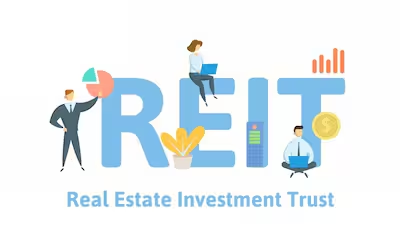Real Estate Investment Trusts (REITs) offer investors exposure to income-producing real estate. Like other public companies, REITs are required to file proxy statements ahead of shareholder meetings, providing key insights into governance, executive compensation, shareholder proposals, and more. For investors, analysts, or governance professionals, understanding how to analyze these proxy statements is essential for evaluating the health, transparency, and direction of a REIT.
This article outlines how to systematically analyze REIT proxy statements and shareholder proposals to make informed investment or voting decisions.
What Is a Proxy Statement?
A proxy statement (DEF 14A) is a filing with the U.S. Securities and Exchange Commission (SEC) that outlines the issues to be voted on at a shareholder meeting, including:
-
Election of board members
-
Executive compensation
-
Auditor appointment
-
Shareholder proposals
-
Corporate governance practices
For REITs, which operate under specific regulatory frameworks and tax considerations, the proxy also sheds light on real estate-related decisions, strategic direction, and capital structure.
Key Areas to Analyze in a REIT Proxy Statement
Board Composition and Election
REIT investors should evaluate:
-
Board independence: Are a majority of directors independent? Independence helps ensure objectivity in overseeing management.
-
Real estate expertise: Do directors have experience in real estate, capital markets, or REIT-specific matters?
-
Diversity: Consider the gender, racial, and skill diversity of the board, as diverse boards may better reflect stakeholder interests.
-
Tenure and refreshment: Long tenures can lead to entrenchment; balanced turnover supports governance evolution.
Watch for staggered boards, where only some directors are up for election, which can entrench power and diminish accountability.

Executive Compensation
The Compensation Discussion and Analysis (CD&A) section details pay structure and philosophy.
-
Alignment with shareholder returns: Is compensation tied to performance metrics like funds from operations (FFO), total shareholder return (TSR), or NAV growth?
-
Pay mix: Look for a reasonable balance between base salary, annual bonuses, and long-term equity awards.
-
Peer comparisons: Proxy statements often list peer REITs. Analyze whether the compensation is aligned with performance relative to peers.
-
Clawback and hedging policies: Strong REITs discourage excessive risk-taking by implementing these protections.
Investors should also review the Say-on-Pay vote results from previous years to gauge shareholder sentiment.
Shareholder Rights and Governance Policies
Governance quality can be inferred from:
-
Voting structure: Does the REIT follow one-share-one-vote? Dual-class structures may dilute shareholder influence.
-
Majority voting: Are directors elected by majority or plurality vote?
-
Poison pills / anti-takeover provisions: These can protect the company but may also insulate poor management.
-
Bylaw amendment rights: Can shareholders amend bylaws easily, or is the bar unrealistically high?
Check whether the REIT has adopted governance best practices recommended by institutions like ISS or Glass Lewis.
Auditor Selection and Audit Fees
Audit-related proposals are usually routine, but investors should consider:
-
Auditor tenure: Long auditor relationships can threaten independence.
-
Audit vs. non-audit fees: Excessive non-audit fees could indicate conflicts of interest.
Also examine whether there were any material weaknesses in internal controls or restatements in financials.
Understanding Shareholder Proposals
Shareholder proposals are suggestions submitted by investors to be voted on. While typically non-binding (precatory), they can influence corporate behavior if they gain significant support.
Common Types of Shareholder Proposals in REITs
-
Environmental, Social, and Governance (ESG):
-
Climate risk disclosures
-
Board diversity reports
-
Sustainable development policies
-
-
Governance Enhancements:
-
Proxy access (ability for shareholders to nominate directors)
-
Declassification of boards
-
Majority vote standards
-
-
Compensation-Related Proposals:
-
Requests to link pay to ESG metrics
-
Prohibit accelerated vesting upon a change in control
-
-
Shareholder Rights:
-
Allow special meeting rights
-
Eliminate supermajority vote provisions
-
How to Analyze a Proposal
-
Understand the objective: What problem is the proposal trying to address?
-
Proponent: Who submitted it — an individual investor, pension fund, activist group?
-
Board response: Management usually recommends voting for or against — their reasoning is critical.
-
Past support: If a proposal is resubmitted, review historical voting trends and support levels.
-
Materiality: Will the proposal, if enacted, materially affect operations, transparency, or shareholder value?
Example: A proposal asking a REIT to issue a climate risk report might be relevant if the REIT owns coastal properties exposed to flooding or hurricanes.
Tools and Resources for Analysis
To analyze proxy statements effectively, use:
-
SEC EDGAR: Search by REIT name or ticker to access proxy filings.
-
Institutional Shareholder Services (ISS) and Glass Lewis: Governance research and voting recommendations.
-
Morningstar, MSCI, and Sustainalytics: Provide ESG and governance risk ratings.
-
Company IR websites: Host annual meeting materials, ESG reports, and governance guidelines.
Final Tips
-
Start early: Proxy season (typically spring) can bring dozens of filings at once.
-
Read the summary: Most proxies now begin with a summary that highlights key issues.
-
Focus on outliers: Excessive pay, weak board oversight, or ignored shareholder votes are red flags.
-
Engage if possible: Some investors file their own proposals or meet with management to advocate change.
Conclusion
Analyzing REIT proxy statements and shareholder proposals is more than a compliance exercise — it’s a window into how a REIT operates, allocates capital, and treats shareholders. By applying a structured approach to governance review, investors can make better-informed decisions about voting, engagement, and investment risk. In the era of ESG, transparency, and active ownership, understanding what’s inside a proxy statement is increasingly essential
Frequently Asked Questions
What key factors should investors examine when evaluating the board of directors in a REIT proxy statement?
Investors should assess the following:
-
Board Independence: Majority of directors should be independent to avoid conflicts of interest. REITs with high insider presence may lack objective oversight.
-
Relevant Experience: Board members should have real estate, capital markets, or REIT-specific expertise to make informed decisions.
-
Diversity: Gender, ethnic, and professional diversity can enhance decision-making and reduce groupthink.
-
Board Refreshment and Tenure: Long-standing directors may become entrenched. Look for term limits or policies that encourage fresh perspectives.
-
Committee Composition: Audit, compensation, and nominating committees should be entirely independent.
These factors ensure that the board is well-equipped to oversee strategy, risk, and management performance.
How is executive compensation typically structured in REIT proxy statements, and what should investors look for?
REIT executive compensation usually includes:
-
Base Salary: Fixed annual pay.
-
Annual Incentives (Bonuses): Based on short-term metrics such as NOI growth, occupancy rates, or tenant retention.
-
Long-Term Incentives (LTI): Often in the form of stock options, restricted shares, or performance units tied to FFO, TSR, or NAV growth.
Investors should look for:
-
Alignment with Performance: Pay should correlate with long-term shareholder returns.
-
Transparent Metrics: Clearly defined, measurable goals rather than discretionary bonuses.
-
Peer Benchmarking: Compare with similar REITs to ensure compensation is reasonable.
-
Clawback and Hedging Policies: Strong policies discourage risky behavior and protect shareholders from misconduct.
What governance red flags should investors watch for in a REIT’s proxy statement?
Key governance red flags include:
-
Classified (Staggered) Board: Only a fraction of directors are elected each year, which can entrench management.
-
Dual-Class Shares: One class of shareholders has more voting power, reducing the influence of common shareholders.
-
Supermajority Voting Requirements: Difficult thresholds for key changes (like amending bylaws) hinder shareholder rights.
-
Poison Pills (Shareholder Rights Plans): Can block takeovers or activist investors, sometimes protecting underperforming management.
-
Lack of Proxy Access: Shareholders should ideally be able to nominate directors under reasonable terms.
Such provisions can limit shareholder influence and should be evaluated critically.
How can investors assess shareholder proposals in proxy statements?
To assess shareholder proposals, investors should:
-
Read the Full Proposal Text: Understand the exact request and its intended outcome.
-
Review the Proponent’s Rationale: Often an individual or institution explains their motivation and concern.
-
Consider the Board’s Response: Management typically recommends for or against the proposal, with an explanation.
-
Evaluate the Proposal’s Materiality: Does the proposal address a significant governance or operational issue?
-
Check Voting History: See if the proposal has been submitted before and the level of shareholder support it received.
Example: If a proposal requests more ESG disclosures, consider whether the REIT operates in climate-sensitive regions or faces material ESG risks.










